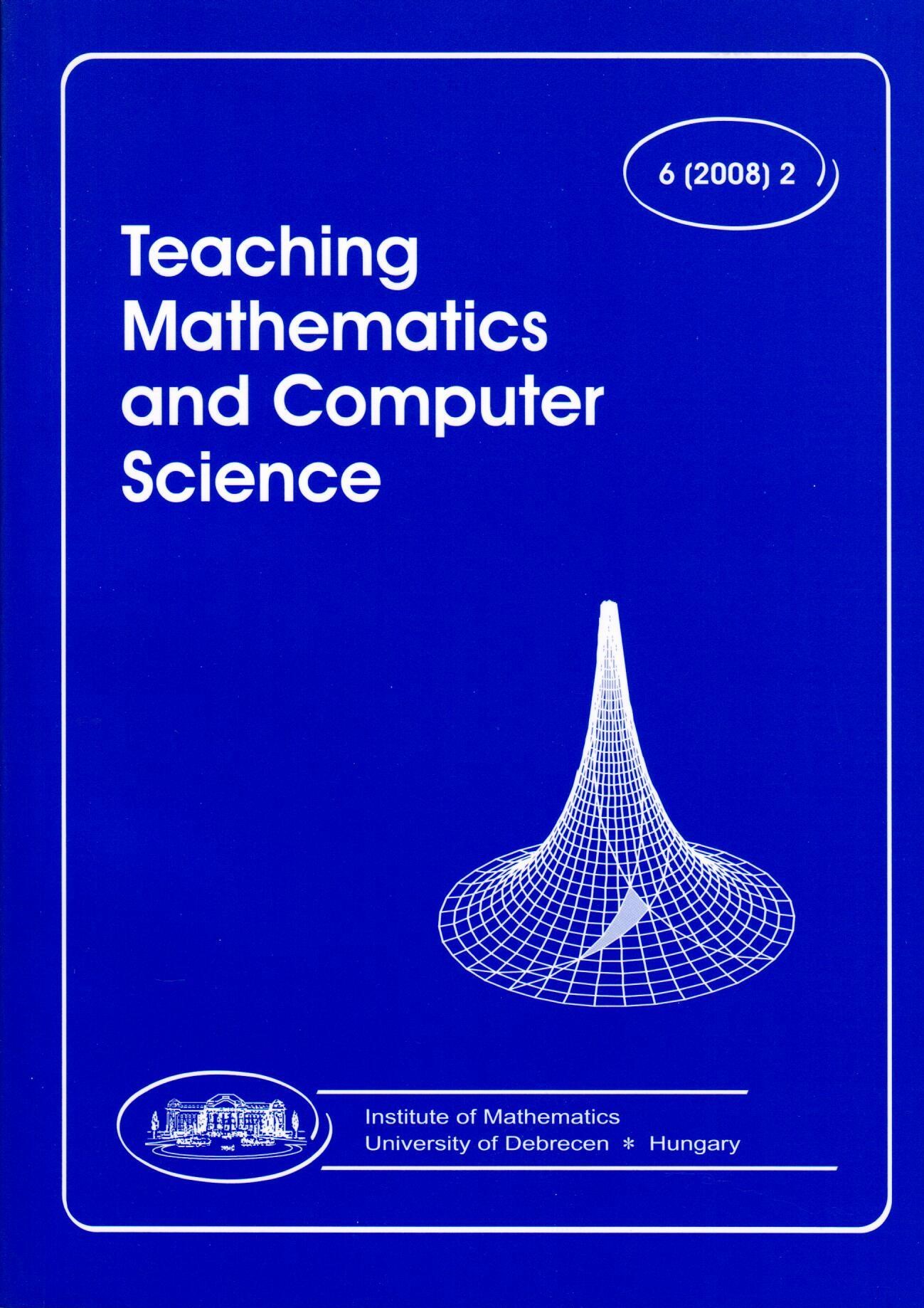Articles
Application of computer algebra systems in automatic assessment of math skills
Published:
2008-12-01
Authors
View
Keywords
License
Copyright (c) 2008 Przemyslaw Kajetanowicz and Jedrzej Wierzejewski

This work is licensed under a Creative Commons Attribution 4.0 International License.
How To Cite
Selected Style:
APA
Kajetanowicz, P., & Wierzejewski, J. (2008). Application of computer algebra systems in automatic assessment of math skills. Teaching Mathematics and Computer Science, 6(2), 395-408. https://doi.org/10.5485/TMCS.2008.0187
Abstract
Mathematics is one of those areas of education, where the student's progress is measured almost solely by testing his or her ability of problem solving. It has been two years now that the authors develop and use Web-based math courses where the assessment of student's progress is fully automatic. More than 150 types of problems in linear algebra and calculus have been implemented in the form of Java-driven tests. Those tests that involve symbolic computations are linked with Mathematica computational kernel through the Jlink mechanism. An individual test features random generation of an unlimited number of problems of a given type with difficulty level being controlled flat design time. Each test incorporates the evaluation of the student's solution. Various methods of grading can be set at design time, depending on the particular purpose that a test is used for (self-assessment or administrative exam). Each test is equipped with the correct solution presentation on demand. In those problems that involve a considerable amount of computational effort (e.g. Gauss elimination), additional special tools are offered in a test window so that the student can concentrate on the method of solution rather than on arithmetic computations. (Another obvious benefit is that the student is thus protected from the risk of frustrating computational errors). Individual tests can be combined into comprehensive exams whose parameters can be set up at design time (e.g., number of problems, difficulty level, grading system, time allowed for solution). The results of an exam can be automatically stored in a database with all authentication and security requirements satisfied.

 https://doi.org/10.5485/TMCS.2008.0187
https://doi.org/10.5485/TMCS.2008.0187






